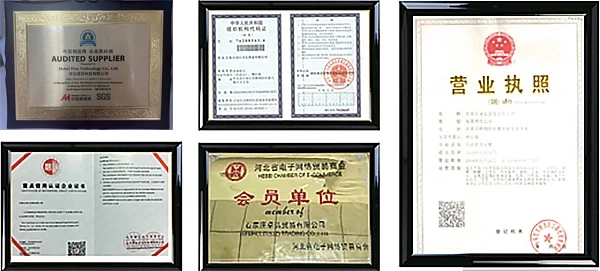



strontium chloride chemical formula
Understanding Strontium Chloride Chemical Formula and Applications
Strontium chloride, denoted by the chemical formula SrCl₂, is an inorganic compound consisting of strontium (Sr) and chlorine (Cl) in a 12 ratio. The compound is known for its distinct properties and applications across various fields, making it a subject of interest in industrial and laboratory settings.
Chemical Structure and Properties
Strontium chloride is classified as a salt, formed when strontium, a soft, silver-white earth metal, contacts chlorine, a yellow-green gas in its diatomic molecular form. In its solid state, strontium chloride appears as a white crystalline powder that is hygroscopic, meaning it can absorb moisture from the air. This property necessitates careful handling and storage to prevent clumping and degradation.
The molar mass of strontium chloride is approximately 158.5 g/mol, and it is highly soluble in water, releasing strontium ions (Sr²⁺) and chloride ions (Cl⁻) when dissolved. The solubility of this salt in water is a crucial factor in its applications, as it allows for easy preparation of solutions used in various chemical reactions and processes.
Applications of Strontium Chloride
Strontium chloride finds numerous applications across different industries. One of the most notable uses is in the production of strontium compounds, such as strontium carbonate (SrCO₃) and strontium ferrite (SrFe₃O₄), which are vital in the manufacture of fireworks, ceramics, and magnets. The bright red color produced by strontium compounds makes them highly sought after in pyrotechnics, providing an attractive visual effect.
strontium chloride chemical formula

In the field of medicine, strontium chloride has been investigated for its potential benefits in the treatment of bone-related diseases, particularly osteoporosis. Some studies suggest that strontium can contribute to bone density and strength, providing a compelling case for its inclusion in therapeutic approaches. However, further research is needed to fully establish its efficacy and safety in clinical applications.
Another important use of strontium chloride lies in the field of radiochemistry. Isotopes of strontium, particularly strontium-90, are often studied for their radioactive properties. Strontium-90 is a by-product of nuclear fission and can be used in various applications, including cancer treatment and radiological research. Strontium chloride acts as a precursor in pathways leading to the isolation of these isotopes.
Moreover, strontium chloride is employed in laboratories for research, particularly in studies relating to ionic interactions and chemical bonding. Its ability to form stable ion pairs makes it a useful compound in the synthesis of new materials.
Safety and Handling
While strontium chloride is generally considered safe when handled properly, it is essential to adhere to safety protocols due to its potential toxicity in large quantities. It can cause irritation to the skin, eyes, and respiratory tract upon contact. Therefore, the use of personal protective equipment such as gloves and safety goggles is advisable when working with the compound.
Conclusion
In summary, strontium chloride (SrCl₂) is a versatile chemical with significant industrial and medical applications. From forming the basis of vibrant fireworks to its potential therapeutic uses in bone health, this compound plays a crucial role across multiple domains. As research continues to unfold, further insights may emerge about strontium chloride's capabilities, paving the way for innovative applications that harness its unique properties. The multifaceted nature of strontium chloride ensures its relevance in both current and future scientific exploration.
-
Why Sodium Persulfate Is Everywhere NowNewsJul.07,2025
-
Why Polyacrylamide Is in High DemandNewsJul.07,2025
-
Understanding Paint Chemicals and Their ApplicationsNewsJul.07,2025
-
Smart Use Of Mining ChemicalsNewsJul.07,2025
-
Practical Uses of Potassium MonopersulfateNewsJul.07,2025
-
Agrochemicals In Real FarmingNewsJul.07,2025
-
Sodium Chlorite Hot UsesNewsJul.01,2025










